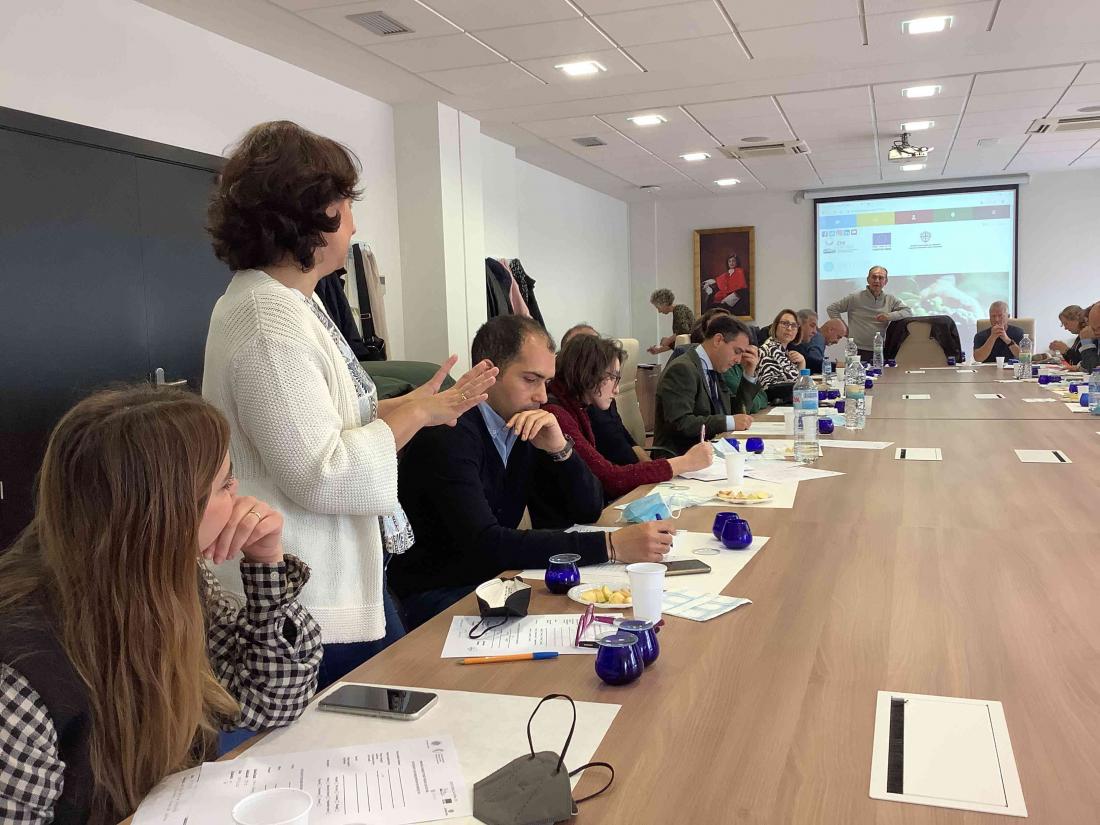ARTOLIO demonstrates its potential in a tasting of extra virgin olive oil at the University of Jaen, Spain

On Tuesday the 30th of May, the second day of the ARTOLIO kick-off meeting, a tasting of some of the project olive oils was carried out at the University of Jaen. It was led by Sebastián Sánchez, partner of ARTOLIO and regional manager of the Jaen region, as well as professor of the University of Jaen, specialized in the tasting of olive oil. The event served the purpose of educating some of the partners into identifying the different elements that distinguish one olive oil from another, as well as showcasing some of the remarkable extra virgin olive oils that come from our own farmers.
When tasting olive oil, one must first smell it, see from how much distance the smell reaches the nose, and what undertones does it smell of. Some can be strong in smell but soft in flavor, some others can smell of tomato vines and then taste like nuts. The fruitiness of the smell has to do with the intensity of perception of the positive attributes. One must also notice if the oil comes from ripe olives or green olives. Usually, the ripe oils give off a less spicy taste while the green ones are stronger at the back of the throat. The amount of bitterness and pungency is also to be decided during the tasting. At first, to differentiate one from the other can be tricky, but eventually the difference makes itself known because usually pungency is the aftertaste to the bitterness, and it affects the back side of the throat as opposed to the bitterness which stays on the tongue. In most cases, olive oils and extra virgin olive oils have some degree of pungency and bitterness.
The other important factor to take into consideration is the intensity of perception of the defects in the different oils. These defects are little imperfections on the taste that occur because of the production process, from the harvesting to the milling. Some of the most common defects are: fusty sediment, humid and earthy aftertaste, rancid aftertaste, frostbitten olives or wet wood aftertaste, as well as other negative attributes like greasy consistency or metallic aftertaste.

All of these attributes directly affect the quality of the product. This is why tasting is important to determine whether the extra virgin olive oils the project is offering to the public are in prime conditions to be commercialized.







